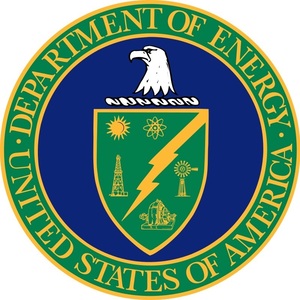DOE to fund feedstock monitoring, carbon storage technology

December 23, 2019
BY U.S. Department of Energy
On Dec. 19, the U.S. Department of Energy’s Advanced Research Projects Agency-Energy (ARPA-E) announced up to $20 million in funding to develop technologies to quantify feedstock-related emissions at the field level.
The Systems for Monitoring and Analytics for Renewable Transportation Fuels from Agricultural Resources and Management (SMARTFARM) program seeks to develop monitoring technologies to quantify feedstock-related emissions and enable new market incentives for efficiency in feedstock production and carbon management.
“Biofuel production is a key U.S. energy asset, and new technologies to increase the monitoring capabilities of our nation’s agriculture industry will continue to position us as a leader in this space,” said U.S. Secretary of Energy Dan Brouillette. “SMARTFARM will enhance the monitoring technologies that feedstock producers need to participate in future carbon management programs, laying the groundwork for cleaner, more efficient biofuel production.”
Advertisement
Advertisement
Achieving greater carbon reductions across the biofuel supply chain requires that feedstock producers adopt technologies and practices that improve yield, drive down production associated emissions, and enhance carbon sequestration in soil. Crop-based biofuels have the potential to supply up to 5% of U.S. energy demand, and developing technologies to advance the biofuel supply chain towards carbon negativity – sequestering more carbon than the production process emits—would greatly increase biofuels’ benefits to the economy and the environment.
SMARTFARM projects will work to bridge the data gap in the biofuel supply chain by funding technologies that can replace national averages and emissions factors for feedstock-related emissions with field-level estimates. These technologies will work to reliably, accurately, and cost-effectively quantify feedstock production lifecycle emissions at the field level (i.e. scalable to >80 acres), and if successful, will catalyze new market incentives for efficiency in feedstock production and carbon management, thereby reducing annual U.S. emissions.
Advertisement
Advertisement
Of the $20 million available through the SMARTFARM program, a portion of funding will be made specifically available for qualifying small business applicants under ARPA-E’s Small Business Innovation Research program.
To learn more about ARPA-E’s SMARTFARM program, click HERE and to apply for funding, visit ARPA-E eXCHANGE.
Related Stories
The U.S. Energy Information Administration maintained its forecast for 2025 and 2026 biodiesel, renewable diesel and sustainable aviation fuel (SAF) production in its latest Short-Term Energy Outlook, released July 8.
XCF Global Inc. on July 10 shared its strategic plan to invest close to $1 billion in developing a network of SAF production facilities, expanding its U.S. footprint, and advancing its international growth strategy.
U.S. fuel ethanol capacity fell slightly in April, while biodiesel and renewable diesel capacity held steady, according to data released by the U.S. EIA on June 30. Feedstock consumption was down when compared to the previous month.
XCF Global Inc. on July 8 provided a production update on its flagship New Rise Reno facility, underscoring that the plant has successfully produced SAF, renewable diesel, and renewable naphtha during its initial ramp-up.
The U.S. EPA on July 8 hosted virtual public hearing to gather input on the agency’s recently released proposed rule to set 2026 and 2027 RFS RVOs. Members of the biofuel industry were among those to offer testimony during the event.
Upcoming Events










